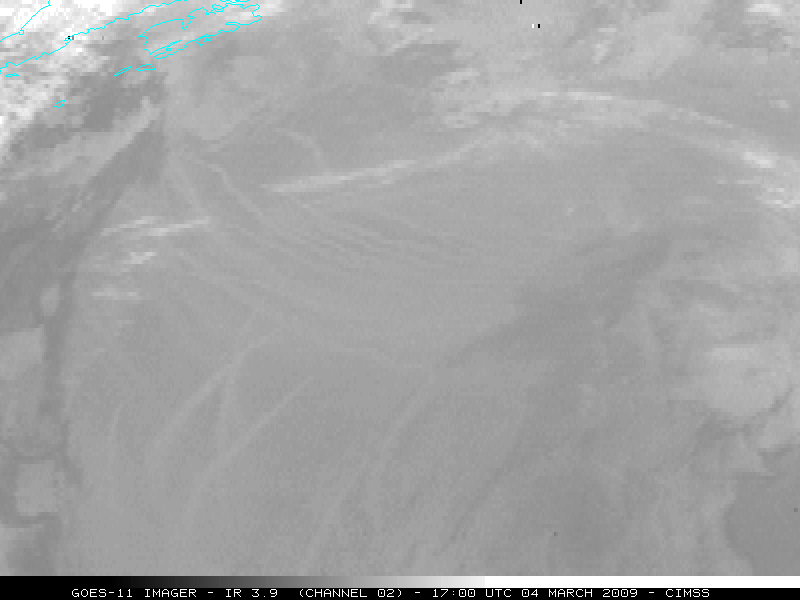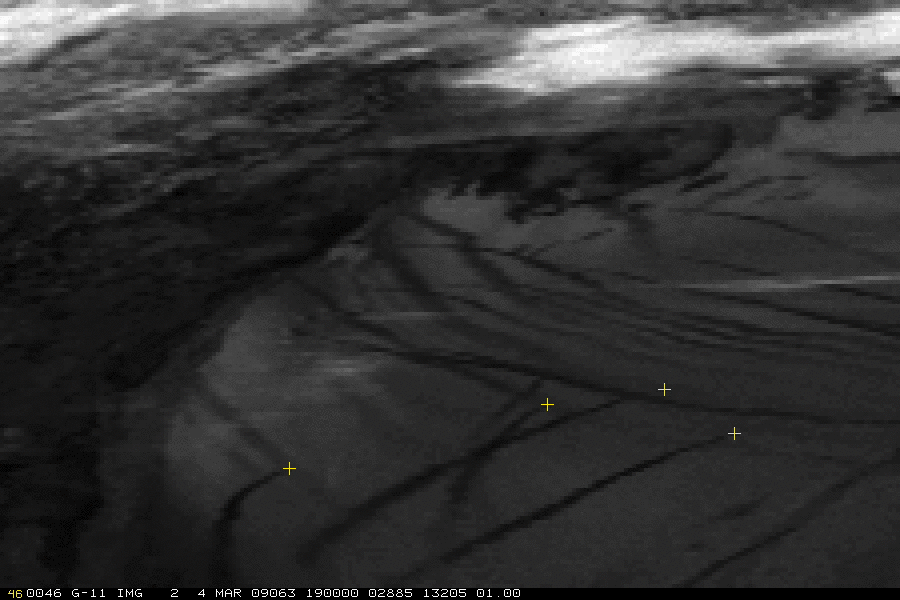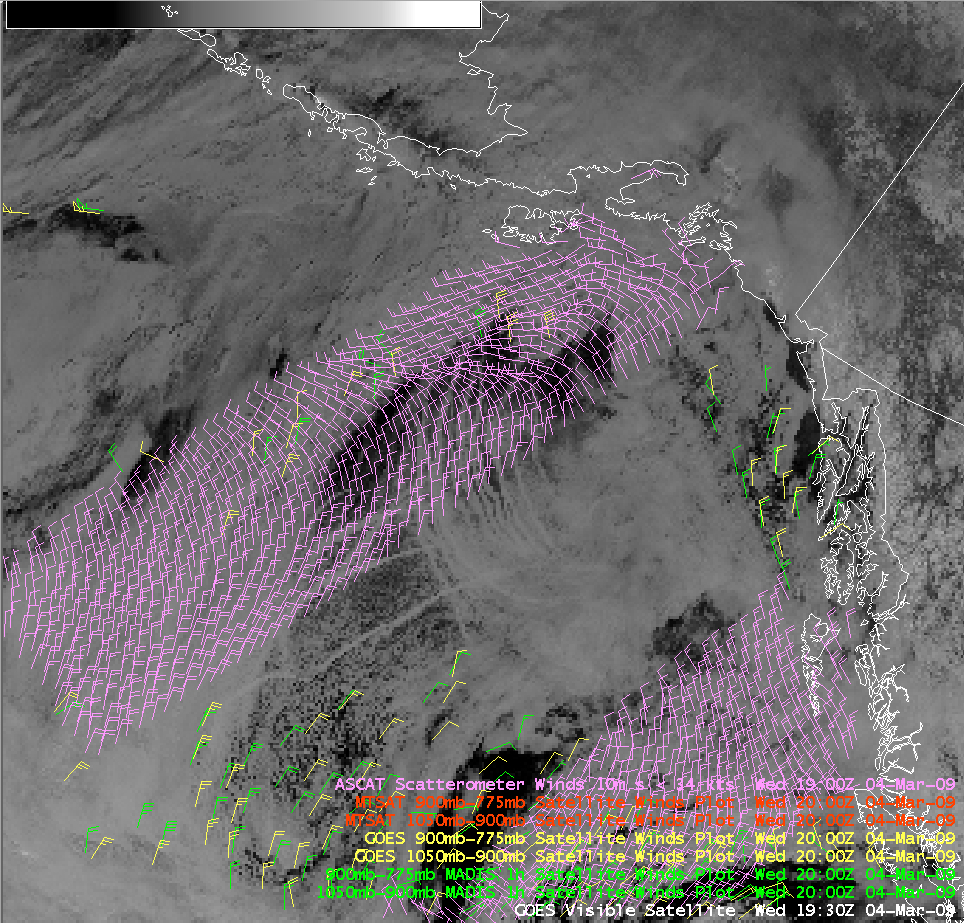Ship track plumes over the Gulf of Alaska
An impressive display of “ship track” plumes was seen on GOES-11 visible images (above; also available as a QuickTime animation) over the Gulf of Alaska on 04 March 2009. Most of the ships in that region were traveling in a westward or a northwestward direction, but you can also see a handful of ships that were moving fairly quickly toward the northeast.
The corresponding GOES-11 3.9 µm shortwave IR images (below; also available as a QuickTime animation) confirm that these features are indeed ship tracks — the solar reflection of the ship track plumes (which were composed of rather small water droplets) caused an increasingly “warm signal” (darker gray enhancement) to appear as long as the sun angle was high. Note how this “dark/warm signal” was absent at the beginning and at the end of the animation, when the sun angle was low in the early morning and in the early evening hours.
A 1-km resolution NOAA-17 AVHRR visible image provides a closer view of the ship tracks (below).
Using McIDAS to track the motion of the leading edges of 4 of   the northweastward-moving ship tracks yielded forward ship speeds of 15-25 knots (below, courtesy of Rick Kohrs, SSEC).
AWIPS images of the GOES visible channel with an overlay of GOES-derived satellite winds (above; also available as a QuickTime animation) displayed a number of wind vectors in the region of the ship track plumes, but all the winds in that particular area were assigned heights within the 775-600 hPa layer. The height assignments for these winds seem a bit too high though, given that studies such as Durkee et al (2000) found that most ship tracks formed in marine boundary layers that were between 300 and 750 m deep. Nearly all of the satellite winds in the ship track region were derived using the GOES visible channel.
An AWIPS image of the ASCAT scatterometer winds (below) confirmed that the surface winds were turning anticyclonically over the region where many of the ship tracks were exhibiting a strongly-curved appearance (before higher clouds moved overhead and obscured their view). The speeds of the ASCAT winds were similar to those of the GOES winds (generally 10-15 knots).






